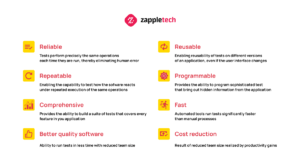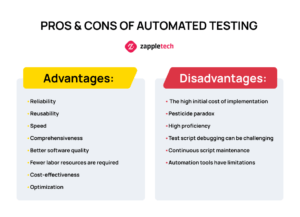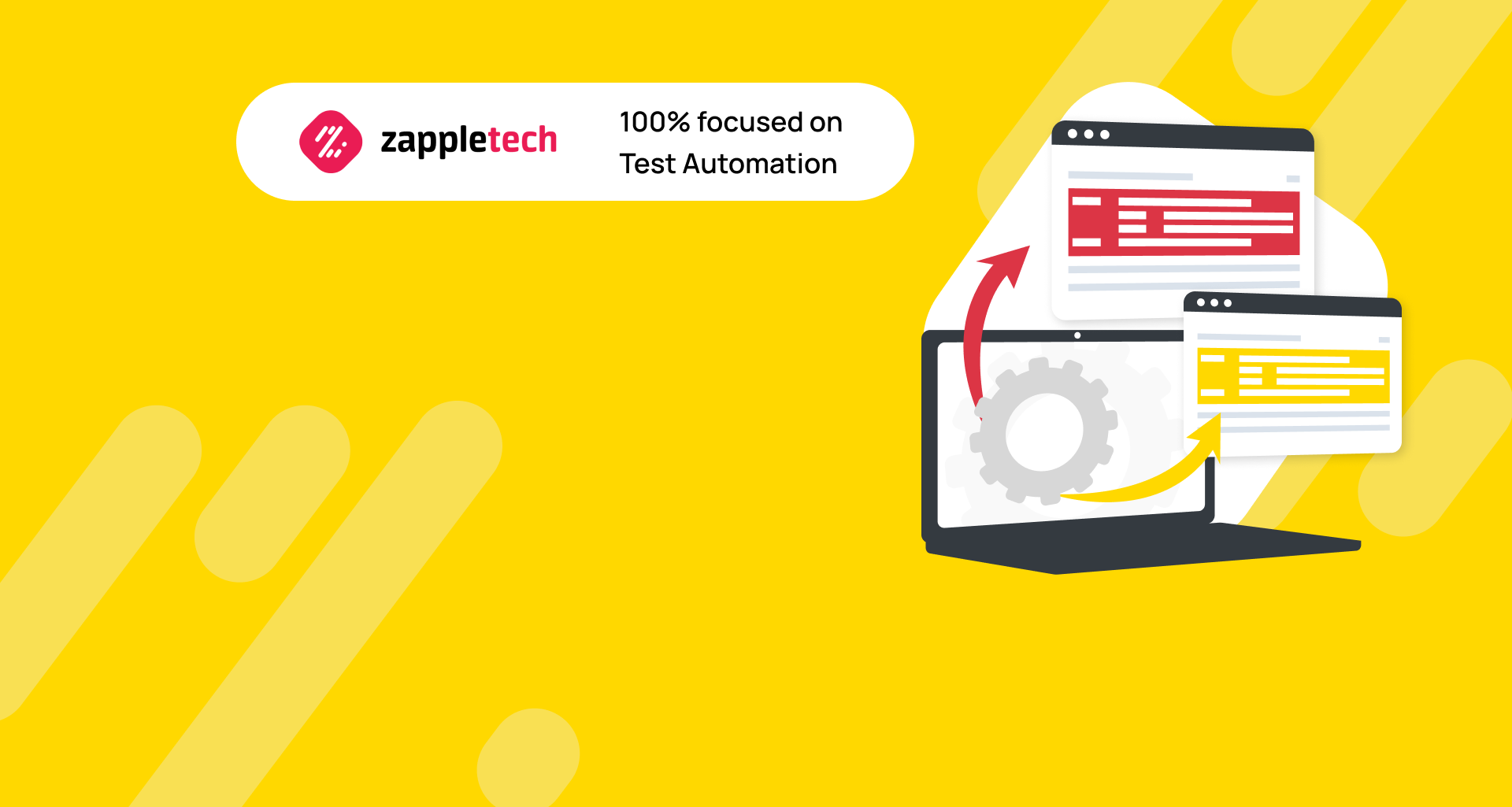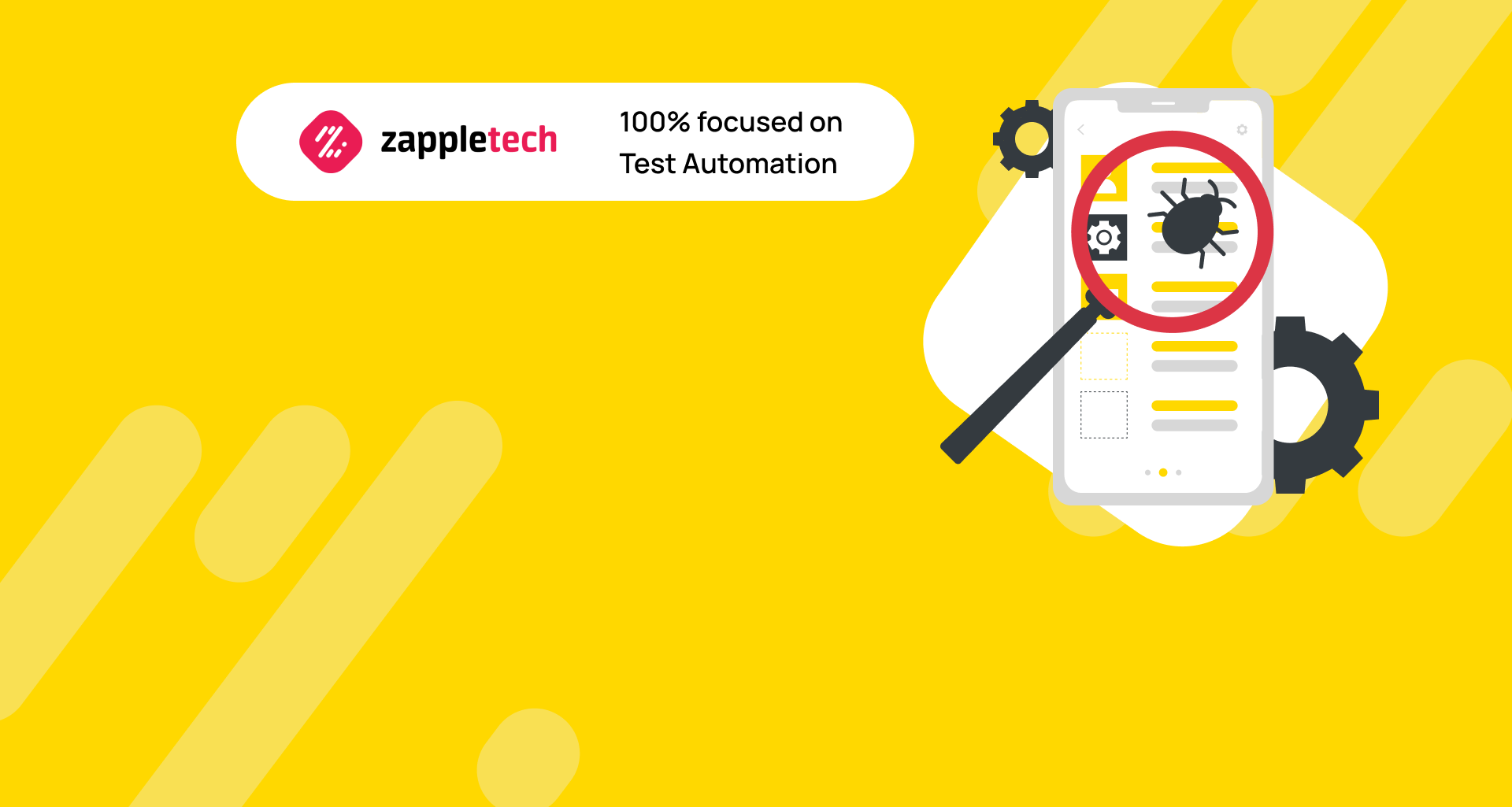Without thorough testing, a development product cannot be considered complete—it’s that simple! Testing is a critical factor in determining an IT product’s success, as high-quality testing helps you avoid countless bugs and disappointed customers. In today’s fast-paced development environment, the ability to deliver a stable, reliable product is paramount, and this is where testing plays a crucial role.
Testing can be carried out both automatically and manually. The choice between these two formats depends on your specific needs, tasks, and project requirements. Manual testing involves human effort, making it more flexible and suitable for exploratory testing where human judgment is essential. On the other hand, automated testing, with its efficiency and repeatability, is often favored for repetitive tasks, regression testing, and scenarios that require consistent execution across different environments.
The automation testing advantages are numerous. It significantly reduces the time required to execute complex test cases and ensures that the same tests are performed precisely the same way every time, minimizing the risk of human error. Additionally, automated testing can run 24/7, allowing teams to identify and address issues quickly, which is particularly beneficial in continuous integration and delivery (CI/CD) environments.
Automating repetitive test cases saves time and reduces human error, allowing your team to focus on more complex testing tasks that require human insight.Sergey AlmyashevCOO, ZappleTech Inc.
However, it’s also important to consider the automation testing disadvantages. Setting up automated tests requires an initial investment of time and resources, as well as ongoing maintenance to ensure that the test scripts remain aligned with the evolving product. Additionally, automation is not always the best choice for testing user interfaces or other areas where human intuition and creativity are crucial.
Understanding the test automation advantages alongside its potential drawbacks will help you make informed decisions about when and how to implement automation in your testing strategy. In scenarios where speed and efficiency are paramount, and where tasks are highly repetitive, automation testing can be a game-changer. But in cases that require a nuanced approach, such as user experience testing or exploratory testing, manual testing may still hold the upper hand.
Ultimately, the decision to choose manual or automated testing—or a combination of both—should be based on your specific project requirements, the nature of the tasks at hand, and the goals you wish to achieve. By weighing the automation testing advantages against the automation testing disadvantages, you can create a testing strategy that ensures your product is both reliable and ready for market success.
Table of Contents
What Is the Essence of Automated Testing
7 Advantages of Automation Testing

In any case, this type of testing has some advantages, and in certain developments, it is even a must-have. Automation testing allows the program to run specified scripts to assess the state and components of the project efficiently. The test automation advantages include increased testing coverage, faster execution times, and the ability to perform repetitive tasks without human intervention, which significantly reduces the margin for error.
Of course, implementing automation testing requires some resources and investment, but these costs are justified by the long-term benefits it provides. One of the significant automation testing advantages is its scalability, which allows teams to handle larger, more complex projects without compromising quality. Additionally, automated tests can be run multiple times at any hour of the day, ensuring that the software is constantly checked for issues, leading to more robust and reliable products.
However, it is also essential to acknowledge the automation testing disadvantages. For instance, the initial setup can be time-consuming and costly, particularly for teams with limited experience in automation. Furthermore, automated tests may not always catch all types of bugs, especially those related to user experience or other nuanced areas that require human judgment.
Nonetheless, when weighing the test automation advantages against the potential drawbacks, it becomes clear that, in many scenarios, the benefits far outweigh the disadvantages. Investing in automation testing can lead to higher efficiency, improved accuracy, and a faster time to market, making it a crucial component of modern software development.
Improves the Quality
Automation testing offers significant advantages, one of the most prominent being its ability to improve the overall quality of software. The accuracy of test results is greatly enhanced, often reaching levels as high as 99.9%. This high degree of precision ensures that even the smallest bugs are identified and addressed, which might be missed during manual testing.
When discussing the automation testing advantages, it’s important to note that almost all possible scenarios, including complex form validations, can be efficiently covered with minimal lines of code. For example, just five lines of code can validate a form, making the process not only accurate but also incredibly efficient. This efficiency reduces the chances of human error, which is one of the common automation testing disadvantages in manual testing scenarios.
However, while the test automation advantages are numerous, such as increased coverage, reliability, and speed, it’s also crucial to recognize that there are potential drawbacks. For instance, setting up automation testing can be time-consuming initially, and maintaining the scripts can require significant effort, especially in dynamic environments. Despite these challenges, the long-term benefits of enhanced quality and accuracy often outweigh the initial investment, making automation an essential component of modern testing strategies.
Implementing test automation can be costly in terms of tools, training, and time, especially for small projects or companies with limited resources.Mikhail BodnarchukCDO, ZappleTech Inc.
It Saves the Time
Automated testing offers several advantages that save time compared to manual testing, making it an efficient approach for many projects. As a rule, testing can be a time-consuming process, often requiring meticulous attention to detail and extensive resources. This is where the advantages of automation testing come into play. By automating repetitive and complex tasks, the process can be significantly accelerated, allowing testers to focus on more critical areas of the project.
In contrast to manual testing, where each step must be executed and verified by a human tester, test automation involves writing code that can automatically run tests, analyze results, and even report defects. This approach not only reduces the time required for testing but also increases accuracy, as it minimizes human error. Automation testing advantages also include the ability to run tests frequently, even on a continuous basis, which is particularly beneficial in agile development environments.
However, it’s important to consider both automation testing advantages and disadvantages. While automation can save time and resources, it requires an initial investment in setting up the testing framework and writing test scripts. Additionally, not all tests can be automated, and some scenarios may still require manual testing to ensure comprehensive coverage. Balancing these factors is crucial for maximizing the benefits of automation while addressing any potential disadvantages.
Autostart
Autostart in automation testing provides significant benefits, enhancing the efficiency and effectiveness of the testing process. This feature offers two key automation testing advantages. First, it offloads the testers, saving them valuable time and allowing them to focus on other critical tasks. This benefit is especially crucial when managing multiple projects or dealing with complex test scenarios.
Secondly, autostart enables the testing process to run during off-peak hours, such as at 2 am or 5 am, when the server load is minimal. This scheduling flexibility means that testers do not need to physically come to the office or initiate the process remotely at inconvenient times, which can lead to better work-life balance and reduced fatigue.
However, while these test automation advantages are clear, it’s also important to consider the automation testing disadvantages. For instance, relying heavily on autostart might lead to issues being overlooked if there is no human oversight during the execution of tests. Additionally, setting up and maintaining autostart configurations can require additional time and resources, which might not be ideal for all testing environments.
Human Factor Avoidance
Human factor avoidance is one of the most compelling automation testing advantages. Even the most responsible, diligent, and experienced tester is prone to making mistakes. These errors can occur due to various reasons, such as fatigue, burnout, or distractions from their surroundings. Such human errors, while often unintentional, can lead to significant issues in the final product, especially in critical stages of testing.
By implementing automation testing, the risk of human error is significantly reduced. Automated tests perform consistently and with the same high quality, regardless of how many times they are run or the time of day. This reliability is especially valuable in scenarios requiring 24/7 testing, where human testers might struggle to maintain the same level of precision over extended periods.
However, while avoiding human errors is one of the clear test automation advantages, it’s also essential to acknowledge the automation testing disadvantages. For example, while automation eliminates human mistakes, it can also introduce new types of errors if the test scripts themselves are flawed. Additionally, the initial setup and maintenance of automated tests can be time-consuming and resource-intensive, requiring a high level of expertise to ensure accuracy and efficiency.
It’s Profitable
Automated testing proves to be highly profitable, especially in large-scale and long-term projects. These projects demand meticulous attention and a qualitative approach during the testing phase. Such a high level of consistency and accuracy can only be ensured by leveraging automation testing.
From a financial perspective, the advantages of automation testing become even more apparent. For instance, a single tester who develops code for automated tests, earning an average of $75 per hour, can effectively replace multiple manual testers—typically ranging from 3 to 8 individuals. Even though the cost of hiring a manual tester is around $50 per hour, the financial benefits of automated testing far outweigh the costs. The automation testing advantages include not only cost savings but also enhanced efficiency and accuracy, despite the automation testing disadvantages that might arise in specific scenarios.
When considering the test automation advantages in the broader context, it becomes clear that the investment in automation tools and skilled testers pays off in the long run. This is particularly true when you factor in the scalability, repeatability, and speed that automation testing offers, making it a superior choice for projects that demand rigorous and ongoing testing efforts.
Visibility of Results
Automated testing is also believed to provide much more descriptive results. The thing is that manual testing can be rather subjective, while the automatic approach gives the necessary statistics, which is especially important before the release.
Advanced Functionality
Automated testing gives more access. For example, you can evaluate almost any parameter, such as load and server traffic, forecasting.
You have access to the backend since automated testing is directly linked to this.
Automated testing perfectly optimizes the project and works with large datasets. Therefore, it is indispensable for large trading platforms, SaaS platforms, entertainment portals.
6 Disadvantages of Automation Testing
Now about automation testing disadvantages. Of course, even such a reliable and optimized method has them.
The first thing to note is that automated testing fails to provide feedback on product quality. This is because it only executes programmed scripts. There are also some other five nuances here.
Automated tests require regular updates to stay relevant with code changes, which can become a burden if not managed properly, potentially leading to more maintenance than manual testing.Mykhailo PoliarushCEO, ZappleTech Inc.
It Is Expensive
Automated testing offers significant advantages, but it’s important to recognize the costs involved, particularly at the outset. One of the main automation testing disadvantages is the expense. The initial investment in automated testing can be high, especially when considering the need to hire specialized professionals. An automated tester typically commands a higher salary because they possess advanced programming skills and perform complex tasks that go beyond traditional manual testing.
For smaller projects, this cost can be prohibitive, making it less practical to implement automation. However, the automation testing advantages become more apparent in long-term projects where the investment in automation can lead to substantial savings and efficiency improvements over time. Despite the initial expense, the benefits of automation, such as faster testing cycles, repeatability, and accuracy, often outweigh the costs in the long run.
Test automation advantages include the ability to run tests multiple times across different environments without additional costs, which is particularly useful for projects with extended lifecycles. Therefore, while automated testing might seem expensive initially, it proves to be a wise investment for projects that are expected to evolve and grow over time
It Has Limitations in Testing
In other words, you cannot test the product from the user’s side. This is about such moment as:
- Color.
- Gamma.
- UX.
- Usability.
- Ergonomics.
Of course, these are not paramount items, from the point of view of development, but important from the users’ side, which will make it difficult for them to fully use the platform.
It Can Be Wrong Too
One of the primary automation testing disadvantages is that it might not always catch minor defects that impact the product’s visual appeal and usability. For instance, test automation advantages like speed and efficiency might come at the cost of overlooking subtle issues such as window misalignment or grammatical errors in the interface.
While the automation testing advantages are significant, including consistency and the ability to run repetitive tasks without human error, it’s crucial to remember that automation testing disadvantages exist. Automated tests may fail to notice slight visual shifts or text errors that can detract from the user experience. These small yet impactful details could be missed if the test scripts aren’t explicitly designed to detect them. Thus, relying solely on automation without incorporating manual testing can lead to overlooked defects that may affect the overall quality of the product.
Balancing the advantages of automation testing with the need for human oversight is key to ensuring that both functional and aesthetic aspects of a product are thoroughly tested and refined.
Debugging a Test Script
One of the notable challenges within the advantages and disadvantages of automation testing is the debugging of test scripts. While automation testing offers numerous advantages, such as increased efficiency and coverage, debugging can present a unique set of issues. When a test script fails or behaves unexpectedly, identifying the root cause can be complex. This complexity may require additional time and resources, which could offset some of the automation testing advantages that organizations typically expect.
Moreover, the process of debugging is not only time-consuming but can also lead to increased maintenance costs. As the test scripts evolve and the application under test changes, the likelihood of encountering issues during test execution rises. This, in turn, necessitates frequent updates to the scripts, adding to the overall cost and effort of maintaining the automation suite.
While the test automation advantages are clear in terms of speed and repeatability, these benefits must be weighed against the potential automation testing disadvantages, particularly when it comes to the ongoing effort required for debugging and maintaining test scripts. Organizations need to carefully consider these factors when deciding to implement automation testing, ensuring they have the necessary resources and expertise to manage the complexities involved.
Automated Testing Is Not a Panacea
Many people rely on this method as if it solves all testing problems. But let’s not omit everything when considering both automation testing advantages and automation testing disadvantages. After all, it is not suitable for all projects and tasks.
For example, manual testing allows you to test almost any application or system. This flexibility is something that automated testing lacks, as it is primarily applicable only with stable systems. While there are clear test automation advantages, such as speed and repeatability, it’s important to recognize its limitations.
Moreover, some types of testing, such as ad-hoc or exploratory testing, can only be done manually, highlighting that automated testing is not always the best approach. Understanding the test automation advantages and automation testing disadvantages is crucial for selecting the right testing strategy for your project.
How to Know If I Need Automated Testing

As you can see, the list of some advantages and disadvantages of automation testing is roughly equivalent in pros and cons. Automated testing is a great technique that significantly simplifies and improves the testing process.
It has a lot of benefits for the project and the team, for example:
- Time-saving.
- Autostart.
- Avoiding the human factor.
- Perspective.
- Functionality.
Along with the process of improvement, you also boost the quality of the product because the automation detects bugs quickly, efficiently, and continuously.
Automated testing is ideal for large data arrays and long-term projects.
The flip side of such a coin is that it is expensive to run and maintain. Also, don’t forget that it also makes mistakes. Automated testing will not allow us to test usability or UX either.
Whether such a solution suits your project, when you’ve learned the advantages and disadvantages of automation testing — it’s up to you.
But first, answer yourself a few questions, namely:
- What is the term and scope of your project?
- Does platform support matter?
- Are you looking for a profitable and affordable testing solution (choose automation testing company)?
And if you answered at least a few of them in the affirmative, then this is what you need.
Bottom line
Test automation offers numerous benefits that can significantly enhance the efficiency and effectiveness of the software testing process. By automating repetitive and time-consuming tasks, teams can accelerate testing cycles, achieve higher accuracy, and ensure greater consistency across different test scenarios. This is particularly advantageous in large-scale projects where manual testing might be impractical or prone to human error. Moreover, automation facilitates continuous integration and continuous delivery (CI/CD), supporting faster release cycles and improving overall product quality.
However, test automation is not without its challenges. The initial setup requires a substantial investment in both time and resources, including the selection of appropriate tools, scripting, and ongoing maintenance. Not all tests can be effectively automated, especially those requiring human judgment or those involving frequent UI changes. Additionally, the reliance on automation might lead to overlooking the importance of exploratory and manual testing, which can uncover critical issues that automated tests might miss.
In summary, while test automation can dramatically enhance testing efficiency and reliability, it must be balanced with manual testing to ensure comprehensive coverage and the ability to adapt to complex and dynamic software environments. Careful consideration of when and how to implement automation is crucial to maximizing its benefits while mitigating its drawbacks.






